
Great Barrier Island lies in the outer Hauraki Gulf, New Zealand, 100 kilometres (62 mi) north-east of central Auckland. With an area of 285 square kilometres (110 sq mi) it is the sixth-largest island of New Zealand and fourth-largest in the main chain. Its highest point, Mount Hobson, is 627 metres (2,057 ft) above sea level. The local authority is the Auckland Council.

Tiritiri Matangi Island is located in the Hauraki Gulf of New Zealand, 3.4 km (2.1 mi) east of the Whangaparāoa Peninsula in the North Island and 30 km (19 mi) north east of Auckland. The 2.2 km2 (1 sq mi) island is an open nature reserve managed by the Supporters of Tiritiri Matangi Incorporated, under the supervision of the Department of Conservation and is noted for its bird life, including takahē, North Island kōkako and kiwi. It attracts between 30,000 and 32,000 visitors a year, the latter figure being the maximum allowed by the Auckland Conservation Management Strategy.
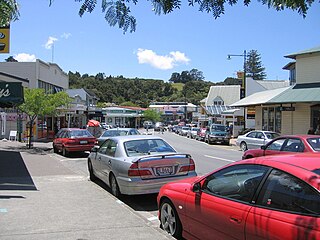
Warkworth is a town on the Northland Peninsula in the upper North Island of New Zealand. It is in the northern part of the Auckland Region. It is located on State Highway 1, 64 km (40 mi) north of Auckland and 98 km (61 mi) south of Whangārei, and is at the head of Mahurangi Harbour.
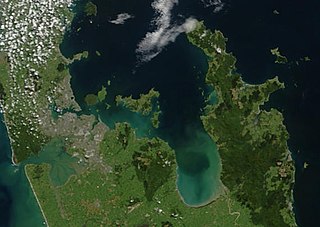
The Hauraki Gulf / Tīkapa Moana is a coastal feature of the North Island of New Zealand. It has an area of 4000 km2, and lies between, in anticlockwise order, the Auckland Region, the Hauraki Plains, the Coromandel Peninsula, and Great Barrier Island. Most of the gulf is part of the Hauraki Gulf Marine Park.

Rākino Island is one of the many islands in the Hauraki Gulf / Tīkapa Moana, an arm of the Pacific Ocean to the northeast of Auckland, New Zealand.
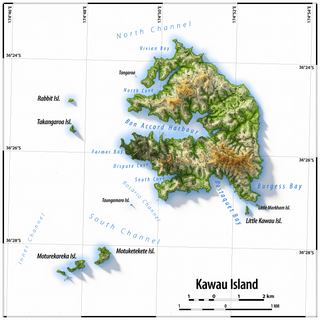
Kawau Island is in the Hauraki Gulf, close to the north-eastern coast of the North Island of New Zealand. At its closest point it lies 1.4 km (0.87 mi) off the coast of the Northland Peninsula, just south of Tāwharanui Peninsula, and about 8 km (5.0 mi) by sea journey from Sandspit Wharf, and shelters Kawau Bay to the north-east of Warkworth. It is 40 km (25 mi) north of Auckland. Mansion House in the Kawau Island Historic Reserve is an important historic tourist attraction. Almost every property on the Island relies on direct access to the sea. There are only two short roads serving settlements at Schoolhouse Bay and South Cove, and most residents have private wharves for access to their front door steps.

Stony Batter is a historic defence installation at the north-eastern end of Waiheke Island, Auckland, New Zealand. It is sited within a 50-acre scenic reserve of the same name, owned by the New Zealand Department of Conservation (DOC). The park serves double duty as a historical and nature reserve, containing unusual rock formations, associated with an extinct volcano, three significant bush blocks and three concrete gun emplacements with an extensive tunnel system, reputed to be the largest in New Zealand.

Motukorea or Browns Island is a small New Zealand island, in the Hauraki Gulf north of Musick Point, one of the best preserved volcanoes in the Auckland volcanic field. The age of eruption is about 25,000 years ago, when the Tāmaki Estuary and the Waitemata Harbour were forested river valleys. Due to centuries of cultivation, little native bush remains except on the north-eastern cliffs, leaving the volcanic landforms easily visible. It exhibits the landforms from three styles of eruption. The island consists of one main scoria cone with a deep crater, a small remnant arc of the tuff ring forming the cliffs in the northeast, and the upper portions of lava flows. The area was dry land when the eruptions occurred, but much of the lava is now submerged beneath the sea.
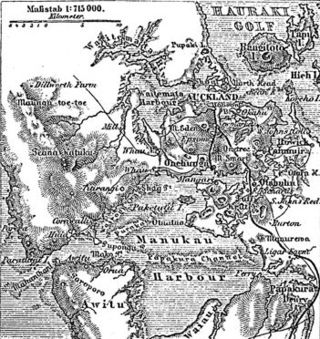
The human history of the Auckland metropolitan area stretches from early Māori settlers in the 14th century to the first European explorers in the late 18th century, over a short stretch as the official capital of (European-settled) New Zealand in the middle of the 19th century to its current position as the fastest-growing and commercially dominating metropolis of the country.

Snells Beach is a small coastal town in the north of Auckland Region in the North Island of New Zealand. It is situated on the eastern coast of the Mahurangi Peninsula and its namesake beach faces east across Kawau Bay to Kawau Island. The nearest town is Warkworth, 8 km (5.0 mi) to the west, which is linked by 8 buses a day and also Mahu City Express twice a day.
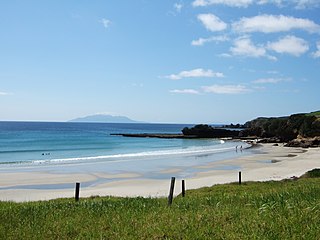
Tāwharanui Peninsula is a finger of land projecting into the Hauraki Gulf from the east coast of the much larger North Auckland Peninsula of New Zealand. It separates Ōmaha Bay to the north from Kawau Bay and Kawau Island to the south. The nearest sizable town is Warkworth.
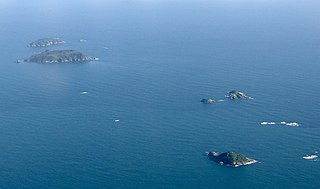
The Noises are a collection of islands lying northeast of Rakino Island in Auckland's Hauraki Gulf, off the coast of the North Island of New Zealand. The largest and most forested islands are Ōtata and Motuhoropapa; Orarapa and Maria/Ruapuke are also significant. After a rat eradication campaign in the 1960s, Maria was the first New Zealand island to become predator-free. The lack of invasive predators, intact native forest, and large numbers of breeding seabirds give the Noises significant conservation value. There has however been a marked decline in marine biodiversity surrounding the islands from over-fishing.
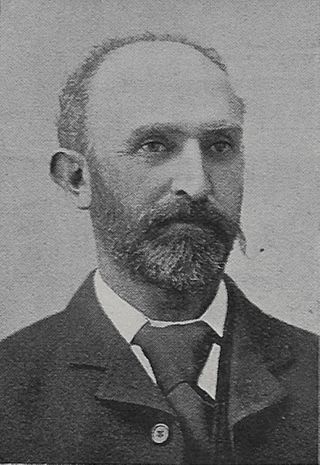
Seymour Thorne George was a New Zealand politician. The premier, Sir George Grey, was his wife's half-uncle and adoptive father, and that relationship resulted in Thorne George representing the South Island electorate of Hokitika despite him being based in the North Island. He later represented the Rodney electorate. Thorne George was later Mayor of Parnell.
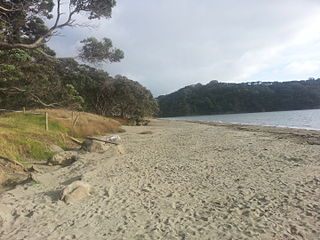
Wenderholm Regional Park is a regional park north of Auckland in New Zealand's North Island. It is situated between the estuaries of the Puhoi River and the Waiwera River, on the east coast of New Zealand's North Island and features a homestead known as Couldrey House, and a carved pouwhenua.

Scandrett Regional Park is a regional park located on the north east tip of the Mahurangi Peninsula, north of the city of Auckland, New Zealand. It encompasses Mullet Point and includes regenerating coastal forest, rocky headlands that protrude into Kawau Bay, Scandretts Bay beach and a precinct of historic farm buildings. The people of Auckland own the park through the Auckland Council.

Motuora is an 80 ha island nature reserve in the western Hauraki Gulf, on the north-eastern coast of New Zealand's North Island. It lies some 6.2 km (3.9 mi) south-west of Kawau Island, 5 km (3.1 mi) east of Mahurangi Heads and 35 kilometres (22 mi) north of the city of Auckland.

The Pumphouse ruins on Kawau Island, New Zealand, belong to the copper mine established in 1844. The mine had ongoing problems, including legal, mismanagement, and flooding. To address the latter issue, a pumphouse was built in 1854. The ruins were registered by the New Zealand Historic Places Trust on 23 June 1983 with registration number 9. The ruins have a category I listing.

The Smelting House ruins on Kawau Island, New Zealand, belong to the copper mine established in 1844. As there were problems with combustion of the copper ore during the sea voyage to Wales or Australia, tenders were called in 1848 for the erection of a copper mine smelter. The Auckland architect Walter Robertson designed a simple building completely built of Waitematā sandstone. Opened in July 1849, it was New Zealand's first smelting house. The smelter was no longer functioning in September 1855, and shortly after that, the mine closed altogether.
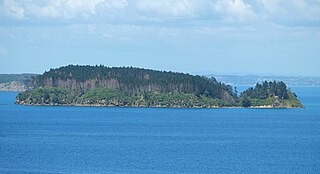
Motuketekete Island is an uninhabited island in the northern Hauraki Gulf, off the northeastern coast of New Zealand's North Island. It is separated from Moturekareka Island to the west by the Blanche Channel.

Challenger Island / Little Kawau Island is an island in the Hauraki Gulf of New Zealand. It sits south of Kawau Island.























